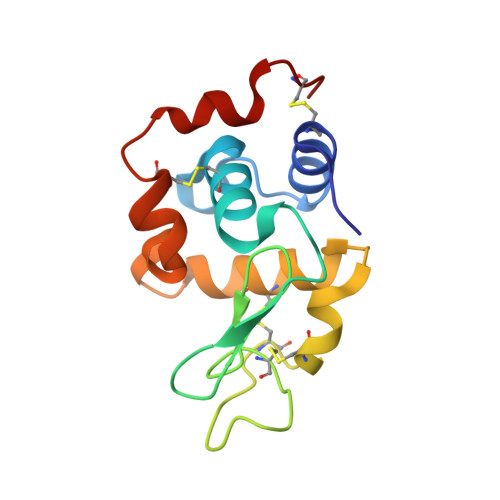Selenourea: a convenient phasing vehicle for macromolecular X-ray crystal structures.
Luo, Z.(2016) Sci Rep 6: 37123-37123
- PubMed: 27841370
- DOI: https://doi.org/10.1038/srep37123
- Primary Citation of Related Structures:
5T3F, 5T3G, 5T3H, 5T3I, 5T3J, 5T3L - PubMed Abstract:
Majority of novel X-ray crystal structures of proteins are currently solved using the anomalous diffraction signal provided by selenium after incorporation of selenomethionine instead of natural methionine by genetic engineering methods. However, selenium can be inserted into protein crystals in the form of selenourea (SeC(NH 2 ) 2 ), by adding the crystalline powder of selenourea into mother liquor or cryo-solution with native crystals, in analogy to the classic procedure of heavy-atom derivatization. Selenourea is able to bind to reactive groups at the surface of macromolecules primarily through hydrogen bonds, where the selenium atom may serve as acceptor and amide groups as donors. Selenourea has different chemical properties than heavy-atom reagents and halide ions and provides a convenient way of phasing crystal structures of macromolecules.
Organizational Affiliation:
Synchrotron Radiation Research Section, National Cancer Institute, Argonne National Laboratory, Argonne, 60439, USA.















